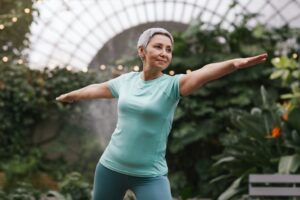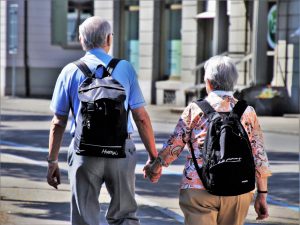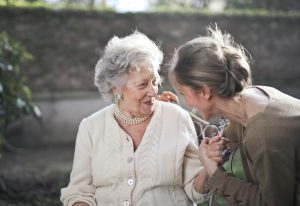Guest Blog: Exploring active wear for boomer generation
Introduction:
Whether you’re trying to get in shape after years of being sedentary or have always been active, it’s important that you make sure that your clothes are functional.
It’s also important to wear clothes that are comfortable and appropriate for your activity level. Not only will this make exercising more enjoyable but it will also help prevent injuries while working out.
Active wear is available in a wide variety of styles and colors, making it easy to find something that suits your own personal tastes. Here are some tips on how you can choose the right fitness gear:
The benefits of wearing active wear:
In addition to being comfortable and functional, active wear is also versatile. You can wear your activewear for any type of workout, whether you’re hitting the gym or working out at home. Activewear is stylish, yet functional–and it can help you feel confident and look great!
The options for active wear are endless:
When it comes to active wear, the options are endless. There are so many different styles and colors that you can choose from that you may find yourself overwhelmed by all of your choices. That’s okay though! You don’t have to pick just one kind of sportswear–you can mix and match different pieces with each other depending on what activity you’re doing or where you’re going. For example, if I’m going hiking in the mountains I’ll probably wear jeans with some hiking boots (or sneakers if it’s not too muddy), and you can order best boots for men or women online too, but if I’m going mountain biking then I would wear shorts and knee pads instead because they’re more comfortable when riding bikes!
Boomers are wearing more color and patterns than ever before:
As you age, it’s important to maintain your sense of style. While you may have worn all black in your younger years, now that your part of the boomer generation, it’s time to express yourself through color and patterns!
Color is a great way to express your personality–and if you don’t like how something looks on someone else? The answer is simple: wear it yourself along with stylish MK bags! Patterns can also be used as an expression of individualism–and boomers aren’t afraid to stand out from the crowd.
There are many choices when it comes to active wear in every size:
When it comes to active wear, there are plenty of choices for every boomer generation. There are many brands and styles, as well as sizes available. You can find active wear in any color or pattern, style and size–even if you’re looking for something special. You can buy bodybuilding stringer tank tops or gym trousers or shorts online too!
Plus-size options are becoming more readily available in the market:
Plus-size options are becoming more readily available in the market. This is a positive development for the boomer generation, who are no longer limited to one or two active wear brands. There are many options for boomers to choose from, including brands like Athleta and Lululemon that cater to older women with their unique designs and styles. The good news is that there’s an abundance of choices out there now so you don’t have to settle on just one brand or style!
Active wear is available with a variety of styles for all body types:
Active wear is available in a variety of styles, sizes and colors. It’s important to remember that active wear isn’t just for people who are physically active. If you’re looking for something more casual or want to wear your favorite pair of jeans, there are plenty of options out there that won’t make you feel like an old fuddy-duddy.
Active wear helps you feel comfortable and confident:
Active wear is the perfect combination of fashion and function, making it a great choice for older adults. Active wear can be used to make a bold fashion statement while also being functional during workouts. Activewear is designed to fit the body, providing comfort and functionality during athletic activity. Activewear comes in a variety of styles suited for all body types or ages.
Want to start moving your body, this is the article for you.
If you’re a boomer and want to start moving your body, this is the article for you.
You’ve probably heard about how important it is for people to keep moving as they age–and it’s true: regular physical activity can help improve your health, reduce stress and increase happiness. But if it feels like there are so many things in life that need your attention that finding time for exercise seems impossible? That feeling isn’t unusual! The key is starting small with simple activities like walking or gardening that fit into your daily routine.
Here are some tips for getting started on this journey:
- Wear clothes that feel comfortable when exercising–the right gear will help motivate you throughout the day!
- Don’t forget sunscreen! Age spots aren’t just something we see in photos anymore; they’re real and they will occur if unprotected skin gets too much sun exposure over time.
- If possible, try scheduling workouts around other activities such as taking care of kids/grandkids or volunteering at church/school events – these kinds of things provide extra motivation because they remind us why getting active matters so much (and give us something else fun/productive).
Add some new gear when comfortable with your exercise routine:
When you’ve gotten comfortable with your exercise routine, it’s time to start thinking about how to make the experience more enjoyable. In addition to finding new exercises that are right for your body and fitness level, there are also some other things you can do:
Gear: If you want a little extra help with your workout, consider buying some gear. For example, if running is difficult for you because of knee pain or back problems (or any other reason), then an elliptical machine may be better suited for these areas than running would be. Or maybe an adjustable weight bench will give those biceps a boost! On the other hand, don’t waste money on something like a yoga mat unless it’s going to make things easier or more fun–and even then only get one if there’s room in the budget!
Active wear can be a bold fashion statement and also functional during workouts:
When you think of active wear, what comes to mind? Do you see the same old gym clothes that have been around since you started working out in high school? Or maybe it’s those yoga pants that have become your uniform for all things work out-related. While there’s nothing wrong with these staples, active wear can be used to make a bold fashion statement while also being functional during workouts.
The options for active wear are endless and include everything from colorful leggings or sports bras to printed tops and jackets! Boomers are wearing more color and patterns than ever before because they want their clothes to be fun without sacrificing function. There are many choices when it comes to active wear in every size so everyone can participate in this trend whether they’re into running marathons or just trying something new at their neighborhood gym class (and yes–there is such thing as “gym class”).
Conclusion
Active wear is a great way to stay active and look good. It’s also important for you to remember that you don’t need to spend a lot of money on new clothes or equipment; there are plenty of options out there that won’t break the bank!
How Sleeping Incorrectly Can Affect Your Pain
When you think about your sleep, you typically think about a period of restoration and rejuvenation. Your sleep is supposed to be the time your mind and body have an opportunity to rest and repair for the next day.
What most people don’t know is that you could be sleeping incorrectly and making your pain worse instead of better.
How you could be sleeping incorrectly
You may not realize there’s a specific technique to the way you sleep. Besides, you’ve been sleeping all of your life. How could you possibly be doing it wrong?
One of the most important factors to your sleep, especially when you’re dealing with aches and pains, is your sleeping posture. Most sleepers sleep on their sides, and this can cause a lot of complications. For one thing, half of your body is crushed under the weight of the other half of your body. This can specifically target your pain points, so you’ll wake up with soreness in your shoulders, hips, and knees.
It’s not only sleeping on your side that can amplify your pain. Stomach sleepers are in an even worse position, putting undue stress on their lower backs all throughout the night, especially with thicker pillows that raise your neck up even higher.
You probably knew your sitting posture was important for your neck and back pain, but keeping proper posture while unconscious is a little more challenging to account for. Here’s how you can work on it.
What you can do to correct your sleep
If you’re a stomach sleeper, you should probably work on trying to get comfortable in other positions. It takes some time to adjust to sleeping in a new position, but it is possible to make a change. If possible, try to adjust to becoming a back sleeper. This is the best position for maintaining spinal alignment and decreasing your chances of waking up in pain.
If you’re absolutely committed to stomach or side sleeping, there are ways you can fix your technique. As a stomach sleeper, sleep with less, or no, pillows to eliminate the arching up that causes lower back pain. As a side sleeper, try to keep your body elongated rather than curled into the fetal position. This can help reduce morning pains (and snoring, too).
Author’s bio: Laurie Larson is a writer based in NC who writes on health topics.
Total Knee Replacement
Background
Similar to hip replacement, knee replacement is done when a person is experiencing decreased range of motion, trouble walking or climbing stairs, and increased degeneration of the joint so as to impair quality of life. This most often occurs as a result of arthritis.
Treatment
Total knee replacement (TKR) surgery involves resurfacing or removing the distal portion of the femur that articulates with the end of the shin bone. The prosthesis consists of metal and plastic or similar materials that are cemented onto the newly resurfaced areas of the articulating bones. Although often done under general anesthetic, this surgery can also be performed under spinal anesthesia. Sometimes blood loss is significant, so patients may be asked to donate their own blood ahead of time to be given back to them in the event it is needed. In addition, a growing trend is toward bilateral knee replacement in those persons requiring both knees to be surgically repaired. The benefits of this are the one-time operative anesthetic and room costs, and many physicians feel recovery from bilateral replacement is similar to single replacement. However, the pain and lack of mobility, as well as the significant increase in the assistance needed after surgery when a bilateral replacement is done, may make this less than ideal for older patients. Surgical procedures for TKR have not evolved quite as rapidly as total hip arthroplasty.
Discomfort after knee surgery is generally severe in the first few days. Complications after surgery may occur, including pain, infection, and blood clots. Patients may use cold packs on the operative area and take pain and sleeping medications as ordered. In addition, alternative therapies such as guided imagery have been shown to help with pain management (Posadzi & Ernst, 2011). Many joint replacement patients feel a loss of control and independence.
Therapy will begin immediately in the acute care hospital. Although weight bearing does not usually occur until 24 hours after surgery, sitting in a chair and using a continuous passive motion machine (CPM) (if ordered), will ease recovery. The use of a CPM is generally based on the surgeon’s preference. There is research to support it, as well as studies indicating that walking soon after surgery has an equal effect and makes the CPM unnecessary. However, in cases of an older person who may not have the mobility skills initially after surgery that a younger person would, a CPM may be beneficial to keep the joint flexible and decrease pain.
Dr. Zann (2005) indicated that “patients undergoing total knee replacement do not achieve their maximum improvement until 2–4 years” (p. 1). This is attributed to the lack of muscular structures that surround and protect the knee and the need for the ligaments and tendons to adapt to the indwelling prosthesis. Recovery times vary and depend upon a number of variables, including the patient’s overall health, age, other preexisting health issues, and motivation. Patients report that the new knee joint never feels normal even years after the surgery, but that they experience an increase in function and generally much less pain than before.
Patients should be educated about signs and symptoms of infection, care of the surgical site (if staples are still present), pain management, and expectations for recovery. A range of motion from 0–90 degrees is the very minimum needed for normal functioning. Normal knee flexion is 140 degrees, but few older persons would get this amount of flexion after surgery, and may not have had full flexion even prior to the operation. After discharge, a walker is usually used in the first few weeks, followed by light activities 6 weeks after surgery. In addition, the patient’s spouse may experience feelings of being overwhelmed due to role transitions that occur after surgery and during the recovery period (Walker, 2012 ). Newer knee prosthetics are still going strong for the majority of patients 15 years after surgery.
Tips for Talking About Mental Health With a Loved One
According to the latest statistics from the National Institute of Mental Health Disorders, 1 in 4 adults in the U.S. face a diagnosable mental health condition. Sadly, many refrain from seeking help. When it comes to having a discussion about mental health with a loved one, it can be difficult to find a place to start. For the listener, it’s often difficult to find the right words to say or determine the best way to offer support. For the individual seeking help, it can be hard to describe just how they are feeling or even find the best course of action to do so. That is why we have compiled some advice to help you begin a conversation about mental health with your loved one.
Actively Listen
It’s a meaningful step for a loved one to open up about their mental health, so having an open ear to actively listen is key to understanding how you can best offer support. Being engaged in the conversation can be made easier by limiting distractions. Leave electronic devices turned off and put away when possible, and avoid bustling spaces like eateries or parks. Find somewhere private and comfortable. This will put you both at ease and also allow you to focus on what your loved one is expressing.
Don’t Judge
It’s also important to listen without judgment or comparison. It’s okay to share experiences that offer insight into coping mechanisms or that build trust and relatability, but try to refrain from making it a competition of who has it worse. This may make the individual seeking help feel as if their experience is not valid. Try your best as the listener to set opinions or biases aside to allow your loved one to express themselves without fear of disappointing you or feeling judged or embarrassed. Instead, listen with an open mind to learn and offer insight based on their specific mental health experience.
Do Your Research
When a loved one comes forward to discuss their mental health, it may be a challenge to really understand just what they are going through on a day-to-day basis. This is where ample research can help you as the listener. Find relevant online resources, like this example from WebMD, that give a digestible overview of specific mental health disorders that your loved one may be struggling with. Bring this research to the conversation and make note of their unique mental health experience and how it applies to what you have learned. This can allow you to be a better resource for next steps and set plans of action to help them cope with their mental health.
Be a Resource
Once you’ve determined the next steps based on the discussions you have had with your loved one about their mental health, set those steps in motion. Review everyday habits they can instill in their routine to feel a better sense of control over their mental health. Be present enough as well to know when to seek help that you, as the listener, can not provide yourself. This may include suggesting the need for professional help. Online psychiatry resources make it easier than ever to commit to routine help from professionals, all while staying in the comfort of your own space. As the listener, this can be a difficult topic to broach, but don’t be afraid to push your loved one to seek professional help if needed and reassure them that you will be with them every step of the way.
Guest Blog: Questions To Ask When Selecting An Assisted Living Facility
If you have a senior loved one in need of assisted senior care, it’s time to look around for a good assisted living facility. There are several factors to consider, so the ideal thing to do is arrange for a tour of the facilities on your list.
It would help if you also asked questions. Getting the answers you need will determine which facility is ideal for your loved one. Here are some of the most vital questions you should be asking.
1. Questions about the staff.
You have to get all the information you can about the assisted living facility’s staff. You will be leaving the care of your senior loved one to them, so it is vital to ensure that they’re well-trained and experienced. Here are some helpful questions.
-What is the staff’s training and experience?
-What is the estimated number of staff members? What is your staff-resident ratio?
-Do you have staff working at night?
-Is there a nursing assistant or a nurse available 24/7?
2. Questions about living spaces, food, and activities.
After ensuring that your loved one is in good hands, you’d want to be sure their living spaces are comfortable, safe, and equipped with the necessary amenities.
-What are the room options we can choose from?
-Do they come with bathrooms, kitchens, and furnishings?
-Can residents decorate their apartments and bring in extra furniture?
-Is housekeeping part of the package?
-Do the rooms come with Wi-Fi connectivity and cable TV?
-Are residents allowed to bring pets?
-Are there common spaces for residents?
-What kind of activities can residents participate in?
-How are meals served to residents?
-Is there a nutritionist or dietician in the facility?
3. Questions about admissions and medication.
It is also essential to gather all the information you need about admissions requirements. Likewise, if your loved one needs medication, you also have to ask all the questions you can think of.
-Is an assessment test required before aspiring residents can be admitted?
-Do you have a waitlist for seniors who need to be transferred or relocated right away?
-How is medication administered and managed?
-How is healthcare provided? Are healthcare visits allowed?
-How much is the monthly fee?
-What’s the billing and payment process?
The answers to these questions will help you choose the best assisted living facility for your loved one.
About the Author
Melissa Andrews is the Content Marketing Strategist for Paradise Living Centers, an assisted living center for seniors with locations in Paradise Valley and Phoenix, Arizona. In her spare time, she enjoys cooking and going on hiking trips with her siblings and cousins.





